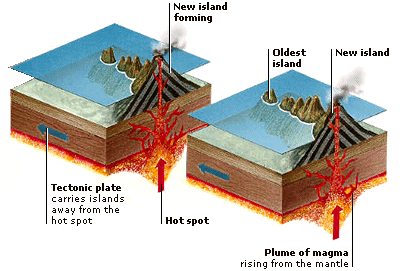- Islands are land masses entirely surrounded by water. They are found in oceans, seas, rivers, and lakes. Islands vary in size from tiny rock outcrops to vast areas such as Greenland, which covers 2.2 million sq km (840,000 sq miles). There are two main types of island: oceanic islands which are remote from land; and continental islands, which often lie close to the mainland. Many oceanic islands are volcanoes. Continental islands are often formed by changes in sea level.
Continental islands, such as the British Isles, rise from the shallow waters of continental shelves, which fringe the world’s continents. Often these islands were once part of the mainland, but were cut off when sea levels rose to flood the land in between. Smaller islands, called barrier islands, sometimes form off coasts where ocean currents or rivers deposit sand or mud.
Coral islands, such as the Maldives in the Indian Ocean, are composed of the limey skeletons of coral polyps. Large colonies of these anemone-like creatures thrive in the warm, shallow waters off tropical coasts or around seamounts. The polyps’ soft bodies are protected by cup-shaped shells, which grow on top of one another to form rocky reefs that eventually break the surface. If the seamount subsides, just a ring of coral, called an atoll, may be left.

Chains of volcanic islands sometimes form near the center of tectonic plates, in zones called hot spots. Some scientists believe that hot spots occur where magma plumes surge up from the mantle below. The magma bursts through a weak point in the crust to form an island. Over millions of years, the hot spot stays in the same place as the crustal plate drifts over it, forming new islands.
Oceanic islands are often formed by volcanic eruptions when plates collide. As one plate is forced below another, its crust melts in the red-hot mantle below. This molten rock rises up again to burn through the crust and erupt on the sea floor. Over time, the erupted rock forms a tall seamount and eventually breaks the surface as an island.


 Users Today : 543
Users Today : 543 Total views : 469681
Total views : 469681